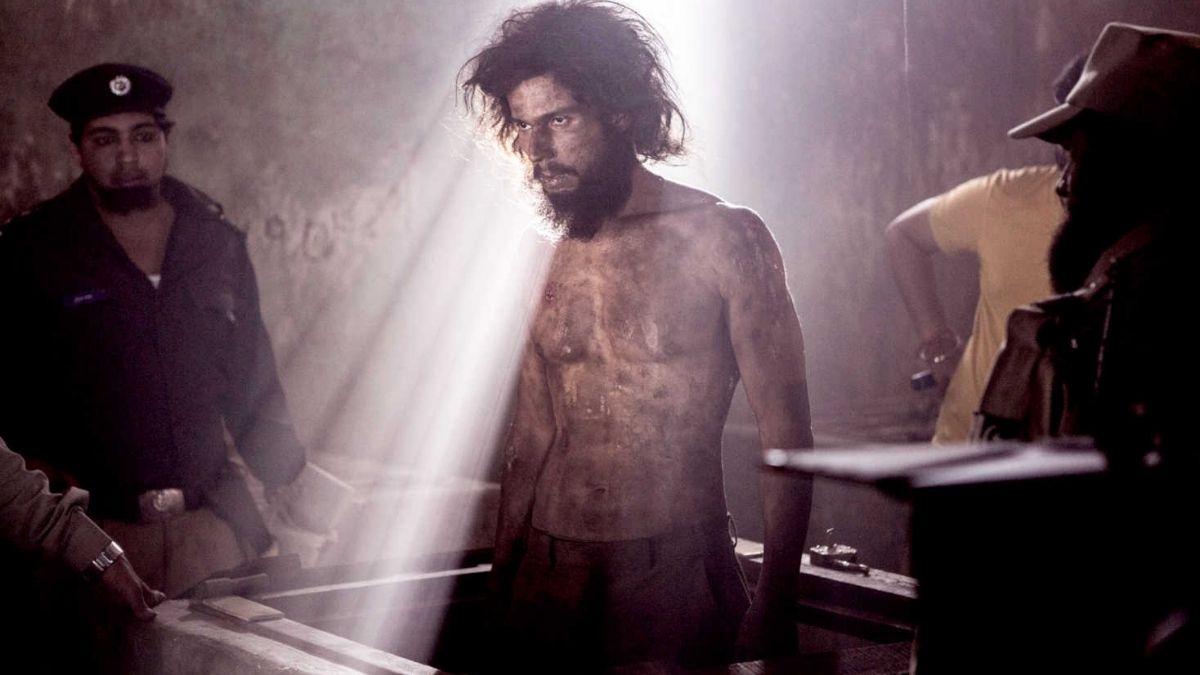
Sarbjit
Director: Omung Kumar
Actors: Aishwarya Rai Bachchan, Randeep Hooda, Richa Chadha
Rating: 1.5/5
A possible problem with being an on-screen diva (and there are of course very few problems with being one), is if you land a part that is supposed to be absolutely opposite to the said public image, it firstly becomes very difficult for audiences to treat you as seriously as someone known to play incredibly heavy roles in the past.
Aishwarya Rai, last seen wearing mauve lipstick at Cannes, in an unconscious tribute to Prince and the Purple Rain, plays the battered, fatigued, inspirational yet doggedly fiery woman in Bhikhawind, a pind (village) in Indian Punjab, fighting for the rights of her brother who’s been holed up in a Pakistani jail for over two decades—apparently unfairly convicted for terrorism and spying.
That gentleman was called Sarbjit. As is this film. But this movie’s lead character is actually Dalbir Kaur, the sister played by Aishwarya.
She speaks mainly in Punjabi. The accent is ever so slightly affected. The performance appears sincere for the most part. On paper, there is much to admire about her character. And so far as letting an audience down is concerned, Aishwarya is the least of the movie’s problems. The paper, on which her role was written, probably is.
Was Sarabjit (or Sarbjit) really a spy, and mastermind of a bomb attack in Pakistan? The movie is certain he wasn’t. He had only accidentally strolled across the border one drunken night. He did confess to being one Ranjit, a RAW agent. But that Ranjit (Manjit, in the actual case) was some other guy.
If this was really a case of mistaken identity, why did the Indian government not help Sarabjit out of death row? Was he the inevitable collateral damage in a much larger conspiracy? Maybe the Indian government itself had something to hide? But we don’t examine any of these gripping conflicts.
The main story itself is something most news junkies would be aware of anyway. It’s also been doing the rounds in mainstream Bollywood, with quite a few filmmakers in the recent past, Subhash Ghai included, casting actors, and announcing their interest in making it.
Omung Kumar gets to direct this. Television aficionados of my vintage will recall Omung as TV host OK from back in the early days of cable television in the ‘90s. He’s of course now best known for directing the boxing biopic Mary Kom. Omung is also an art director by profession.
This film in terms of production design—setting (Punjab, Delhi, border, Lahore), location (jail, village, city, streets, and corridors of power)—looks every bit as authentic as you’d imagine a film of this scale to be. The filmmakers also ensure the known facts of the case are in place.
Why then do I find myself looking so bored, with eyes noticing extraneous things like: Were there the present kinda buses, or Tata Indigo, at the time this quasi period film is placed in Delhi? Or is Aishwarya saying “nahin” in Punjabi right? Does she seem a bit like Sunny Deol from Gadar when she yells, “Hatt”, pointing her finger at a mob in Pak? Or should the camera not be focusing a little more on Richa Chadha who in fact plays Sarabjit’s wife—a “half widow”, as it were? Or since the whole film is centred on the sister, shouldn’t we delve a little more on her own private life, or lack thereof?
Well, one notices these unnecessary things because this poorly edited film itself seems far too concerned with recreation of events rather than effectively telling a story— which is so linearly uni-directional and flat in tone, with characters so uniformly uni-dimensional.
Very few scenes hold you. The ones that do belong to Sarabjit in jail. Randeep Hooda plays this eponymous role. For a few seconds your heart goes out to this guy who’s getting to meet his sister, daughters, and wife, after several years of living in a dark dungeon. This is only a few days before he’s set to be hanged in Pakistan.
Hooda, in dirty khaki prison uniform, having lost enough weight to look like a famished street dog, his teeth stained, body that hasn’t been washed for months, makes you want to empathise with his state. Unlike the rest of the movie, that makes you wish you had read a long piece, or caught a documentary on what happened to Sarabjit and his family, instead of watching it play out minute for minute in this picture—roughly the same thing.
Mayank Shekhar’s book NAME PLACE ANIMAL THING, on desis and pop-culture, gently climbing the bestseller list, is available online and at leading bookstores
